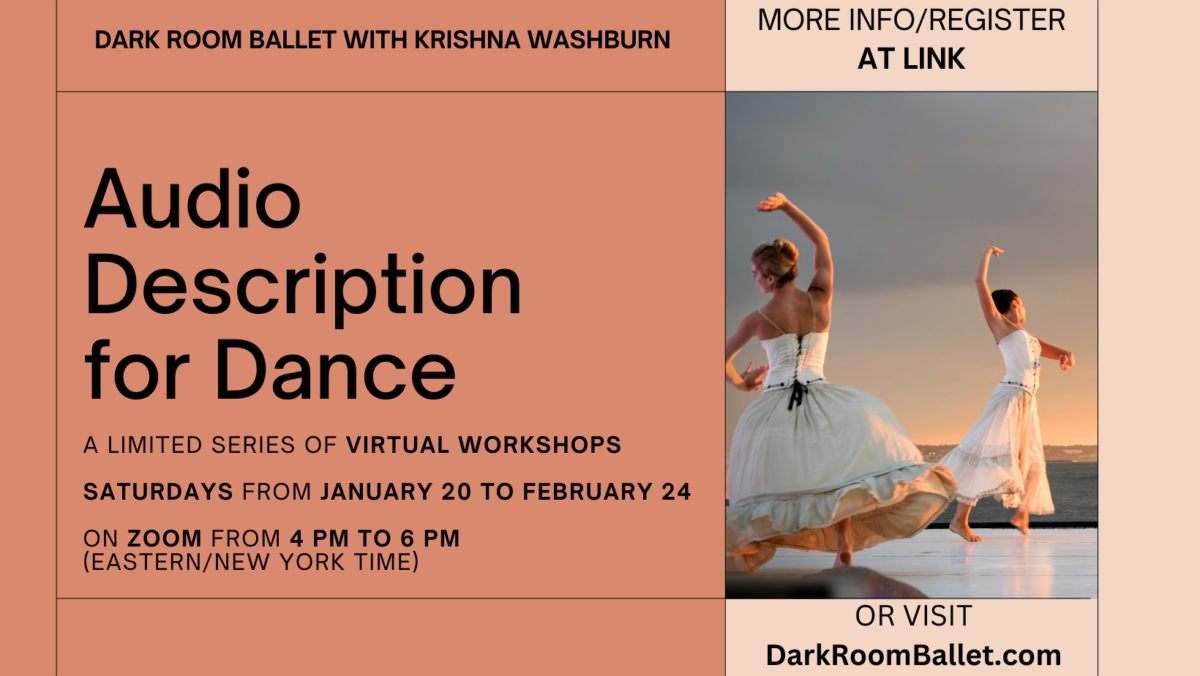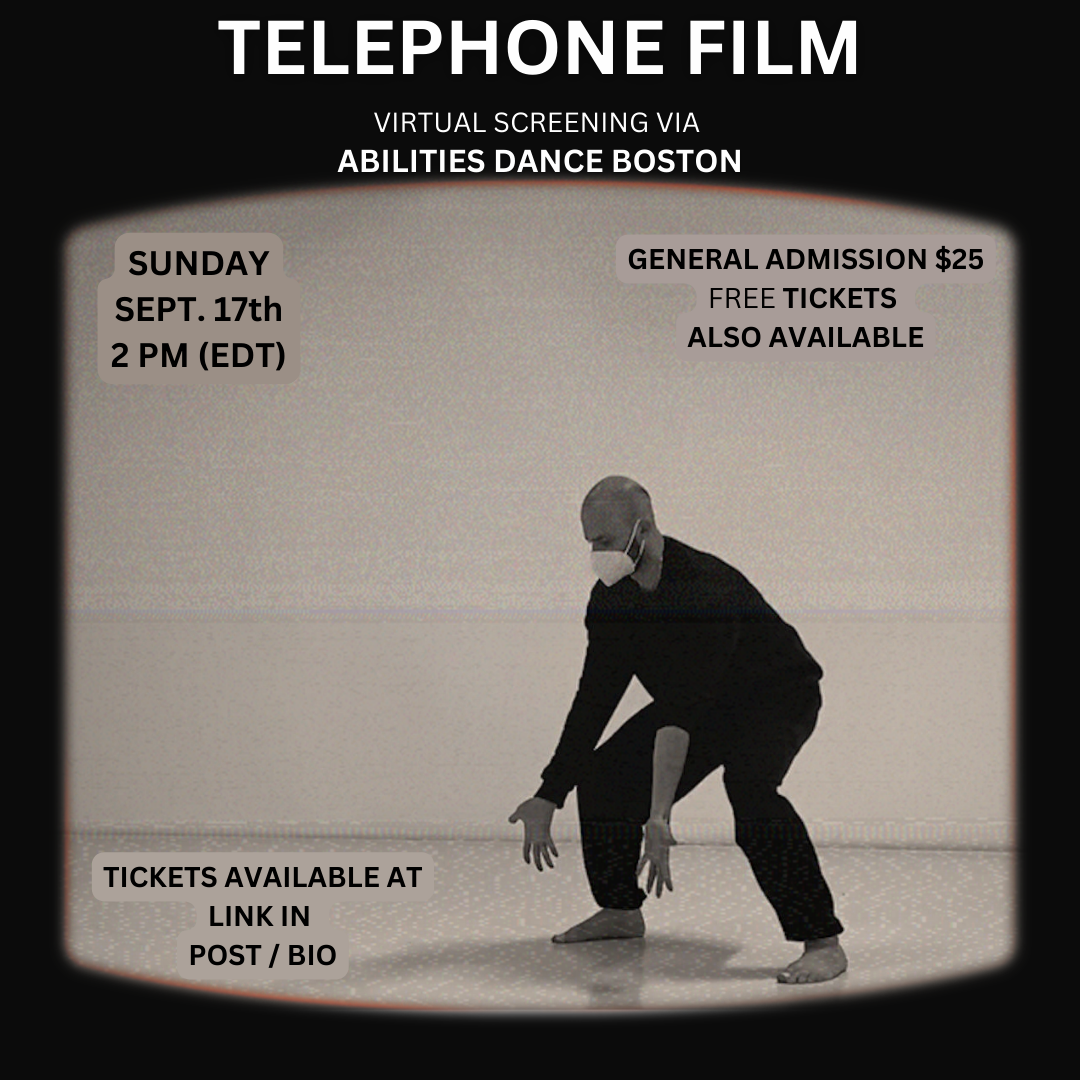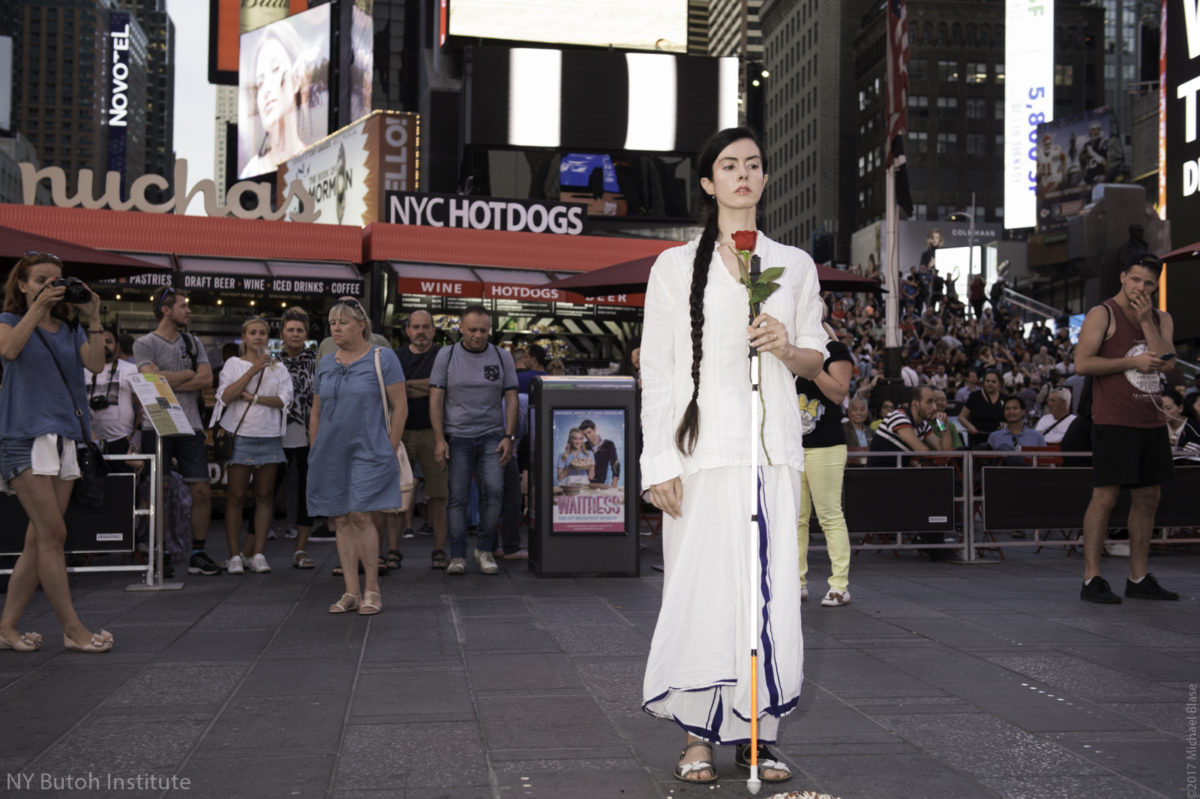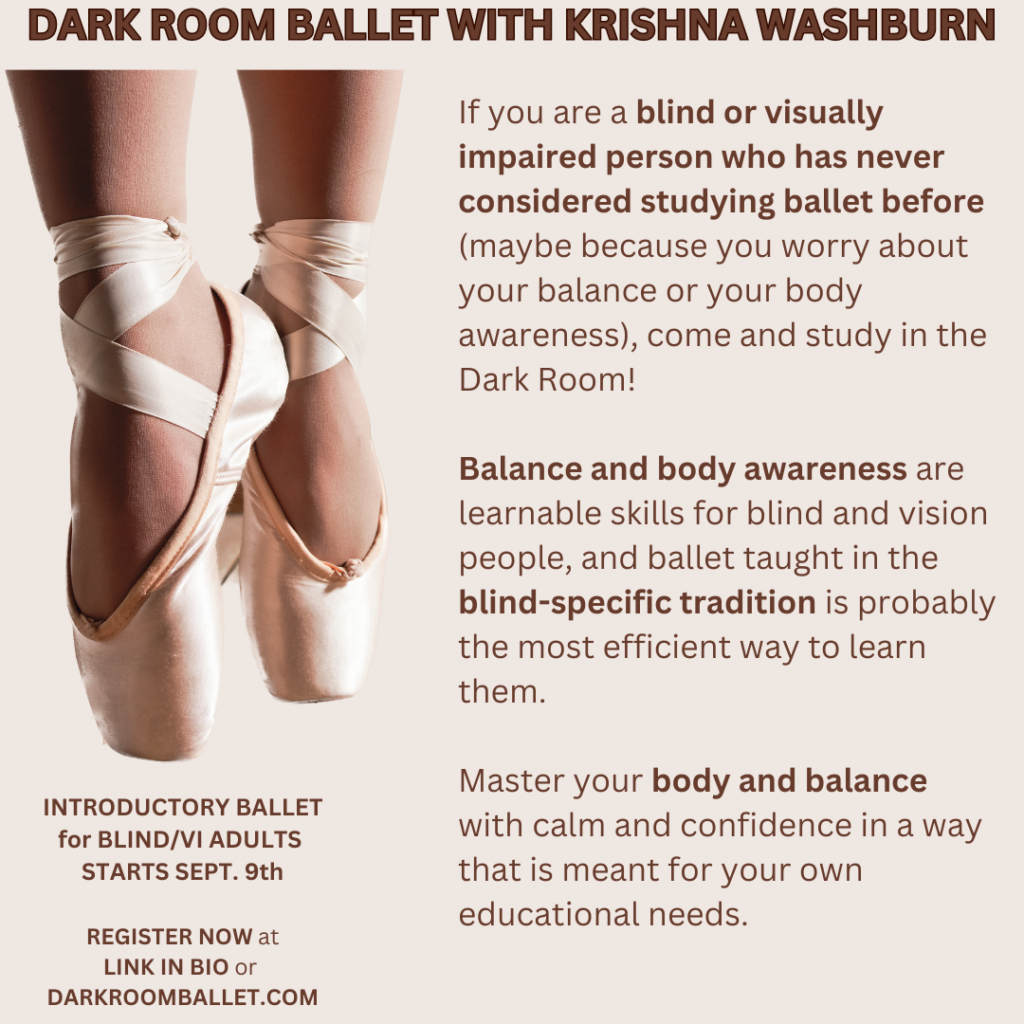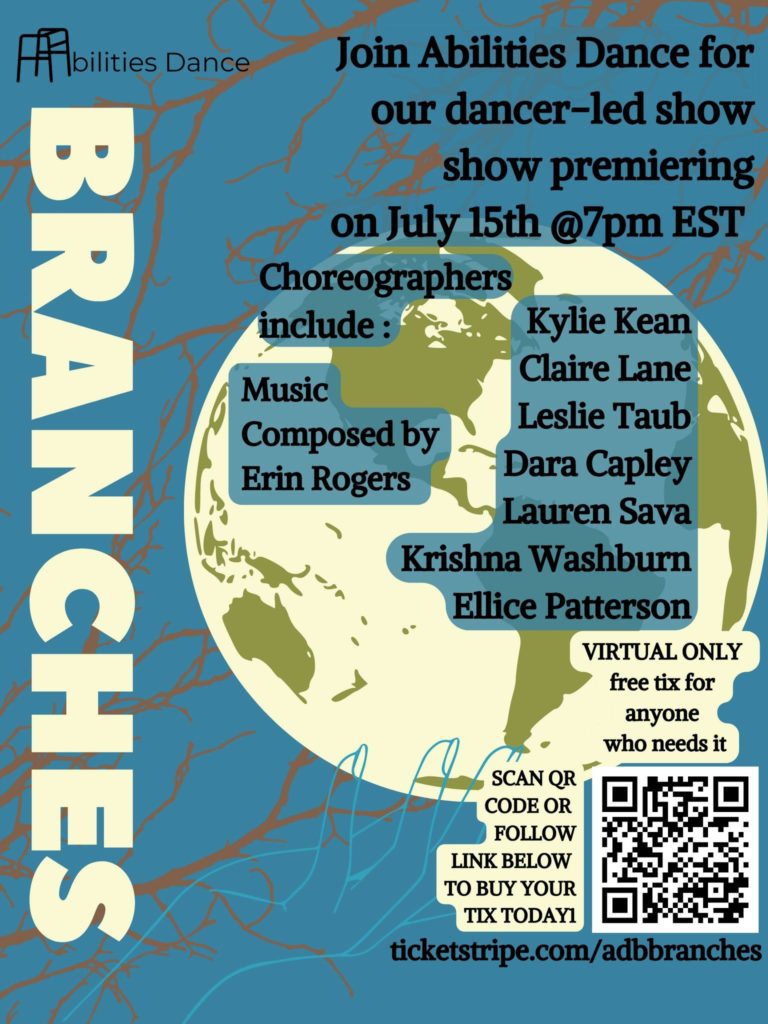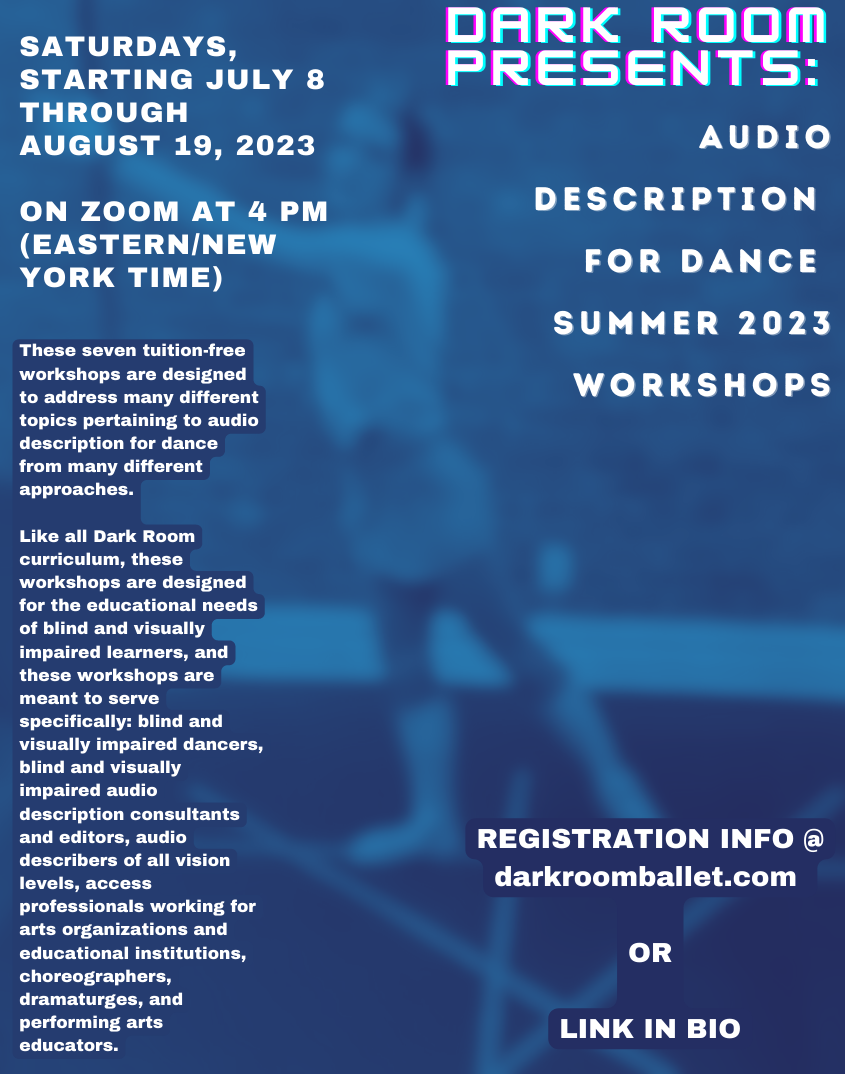Are you an audio description for dance student who missed Krishna’s workshops in either 2022 or 2023?
Did you attend the workshops, but want to study again?
Krishna is presenting a limited series of five of her most foundational audio description for dance workshops in January and February 2024. (A sixth workshop will be by invitation only.)
Sponsored by Movement Research, all workshops take place online via Zoom, on Saturdays from 4 PM to 6 PM (Eastern/New York Time)
To register for any or all of these workshops, please write to info@darkroomballet.com as soon as possible to complete the registration process.
Saturday, January 20, 2024:
Four Strategies to De-Center Sight in Audio Description for Dance
When developing audio description for dance, even for blind artists, there is an expectation that the audio describer will “say what is seen.” What if this approach isn’t adequate to express the artistic ideas of the dance? What are strategies that audio describers and dancers can reach for instead? In this workshop, students will learn four strategies to help break them out of the “say what you see” box, and also learn about a popular strategy that might be better off left on the shelf.
Saturday, January 27, 2024:
The Layered Body: Self-Audio Description that De-Centers Sight
Audio description for dance has, for too long, stayed deliberately superficial and visual in its descriptions of movement performance. In this workshop, participants will cultivate the somatic skills and body awareness to describe how the body feels in movement, rather than how it looks, de-centering sight and rooting itself in visceral language.
Saturday, February 3, 2024:
How it Feels: Integrating Physical Sensation and Emotion in Self-Audio Description
Emotional content is often deliberately excluded from audio description for dance. In this workshop, participants will cultivate a self-audio description practice that can help fully integrate the description of physical movement and the accompanying emotional experience.
Saturday, February 10, 2024:
Experimentation in Vocal Tonality for Audio Description for Dance
Most audio description used to support television and film is recorded with a neutral tone of voice. However, we here in the Dark Room propose that dance is a very different art form that deserves a different approach to audio description. Be ready to listen to some interesting examples of audio description, practice using the voice expressively, and pair sound and movement together in artistically effective ways.
Saturday, February 17, 2024:
Yeah, But Was It Good? Learning How to Listen to Audio Description for Dance Critically
Audio description for dance performances is still very rare, but that doesn’t mean that blind and visually impaired audiences should be satisfied when the audio description on offer is of low quality. Students are going to get to listen to many, many examples of audio description for dance, and talk about what works and what doesn’t work, and what we might change in order to improve it.
Saturday, February 24, 2024:
Our Memories Are Real: The Disabled Dancer’s Body
This self-audio description workshop is designed for disabled artists interested in creating self-audio described movement art for one another. Many arts education programs and performing arts institutions have used dance as a tool to police, judge, objectify, and exclude human bodies. It is our belief in the Dark Room that dance at its highest form of artistry should only be used as a tool to express creativity, to explore the infinite physical sensations of movement, and to cultivate human empathy. In this workshop, disabled artists will be given frameworks to safely explore and memories of body policing, judgment, objectification, and exclusion, and will have opportunities to explore integrating storytelling, visceral sensation, and self-ownership through self-audio described dance.
* This workshop is by invitation only.
Image description:
On an orange and tan background, black text reads:
DARK ROOM BALLET WITH KRISHNA WASHBURN
Audio Description for Dance
A LIMITED SERIES OF VIRTUAL WORKSHOPS
SATURDAYS FROM JANUARY 20 TO FEBRUARY 24
ON ZOOM FROM 4 PM TO 6 PM (EASTERN/NEW YORK TIME
MORE INFO/REGISTER AT LINK
OR VISIT DarkRoomBallet.com
Outdoors at sunset, two barefoot dancers wearing flowing white dresses with dark trim and upswept hair stand at a distance while in similar motion, facing away from each other with heads turned to the side, one arm arched above their heads with a palm facing up and the other bent towards their sides with a palm out.
